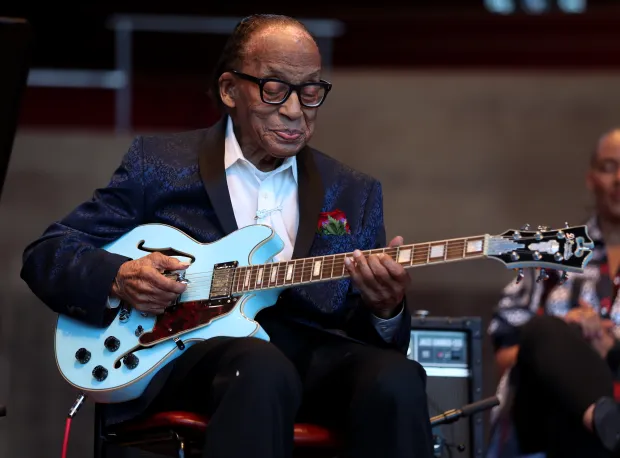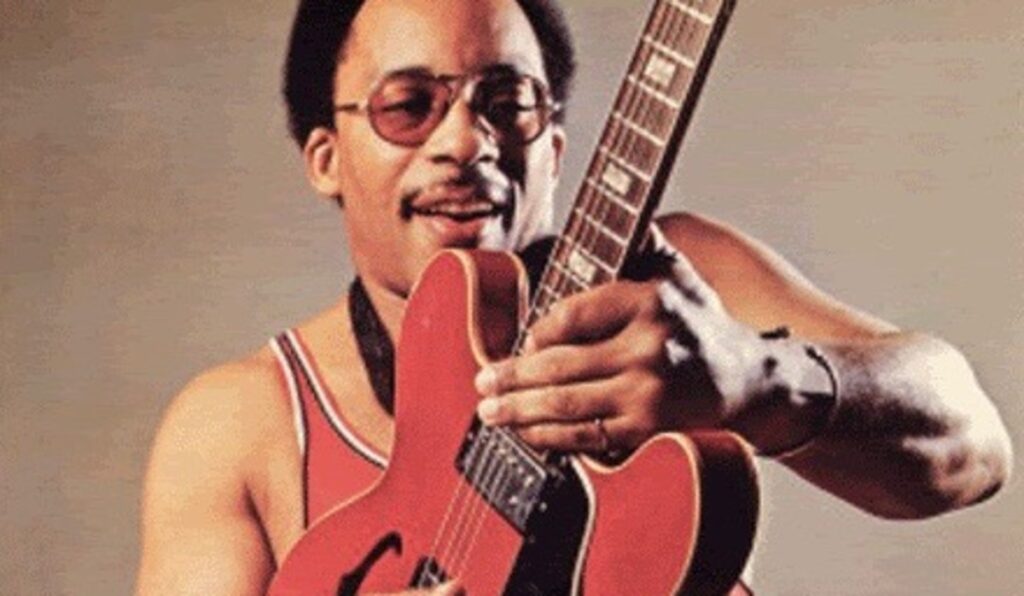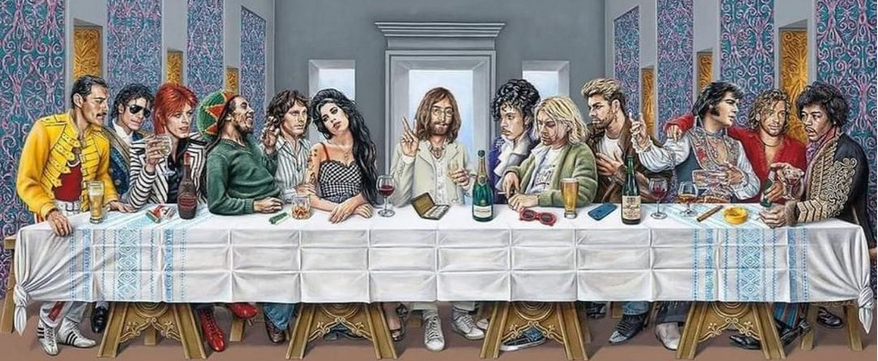
George Freeman was a distinguished American jazz guitarist and recording artist, celebrated for his sophisticated technique and significant contributions to the Chicago jazz scene. Over a career spanning more than seven decades, Freeman collaborated with numerous high-profile performers and left an indelible mark on the evolution of jazz guitar.
Early Life and Musical Beginnings
George Freeman was born in Chicago, Illinois, on April 10, 1927 and was immersed in a musical environment from a young age. His father, George Sr., was a Chicago police officer who often interacted with musicians at South Side clubs, notably the Grand Terrace Ballroom. This connection brought jazz luminaries like Louis Armstrong, Earl Hines, and Fats Waller into the Freeman household, providing young George with firsthand exposure to the jazz world. His mother was an amateur guitarist and singer, further enriching the family’s musical atmosphere. Freeman’s siblings also pursued music: his older brother, Von Freeman, became a renowned tenor saxophonist, and his other brother, Eldridge “Bruz” Freeman, was a skilled drummer.
Inspired by witnessing T-Bone Walker’s electrifying performance at the Rhumboogie Café in the early 1940s, Freeman decided to learn the guitar. He honed his skills at DuSable High School, a breeding ground for future jazz talents under the tutelage of Captain Walter Dyett. Although Freeman was not part of Dyett’s formal program, he collaborated with many of its standout students, including Johnny Griffin, Gene Ammons, and Dinah Washington. These early experiences laid the foundation for his distinctive style, which blended elements of swing, bebop, and blues.
.

.
Emergence in the Chicago Jazz Scene
In his teenage years, George Freeman joined The Dukes of Swing, led by Eugene Wright. Seeking more opportunities to showcase his solo abilities, he formed his own band, performing primarily at the Pershing Hotel’s ballroom. By 1946, Freeman was leading Chicago’s first modern-jazz bebop band, featuring alto saxophonist Henry Pryor, tenor saxophonist Alec Johnson, and trumpeter Robert Gay. His ensembles frequently backed visiting jazz greats such as Coleman Hawkins and Lester Young. During an engagement with Young, Freeman impressed the saxophonist by replicating his solo note-for-note, showcasing his deep understanding and technical prowess.
Collaborations with Charlie Parker and National Tours
Between 1950 and 1953, Freeman had the opportunity to perform with the legendary Charlie Parker in Chicago and Detroit. These collaborations highlighted Freeman’s ability to adapt to Parker’s innovative bebop style. An amateur recording of one such performance has been reissued multiple times, with music historians noting Freeman’s experimental approach, likening it to the advancements made by guitarists in the 1990s.
In the late 1950s, Freeman expanded his horizons by touring nationally with artists like tenor saxophonist Sil Austin, vocalist Jackie Wilson, and organists Wild Bill Davis and Richard “Groove” Holmes. These experiences allowed him to explore various musical styles and further develop his unique sound.
George Freeman’s Recording Career and Notable Albums
George Freeman‘s recording career began in earnest with his debut album, “Birth Sign,” released on Delmark Records in 1972. This album showcased his compositional skills and featured collaborations with his brother Von Freeman and other notable musicians. Throughout his career, Freeman released several albums that highlighted his versatility and innovative approach to jazz guitar. Notable releases include “New Improved Funk” (1974), “Rebellion” (1995), and “At Long Last George” (2001), which featured vocalists Kurt Elling and René Marie.
In his later years, Freeman continued to produce music that resonated with both critics and audiences. His 2015 album, “All in the Family,” was a collaboration with his nephew, saxophonist Chico Freeman, emphasizing the family’s deep musical roots. In 2019, he teamed up with blues harmonica player Billy Branch for “George The Bomb!,” blending jazz and blues traditions seamlessly.
Continued Performances and Legacy
Even into his 90s, George Freeman remained an active performer, regularly appearing at Chicago venues such as the Green Mill Cocktail Lounge. His annual birthday performances became a cherished tradition for Chicago jazz enthusiasts. In April 2023, to celebrate his 96th birthday, Freeman released “The Good Life” on HighNote Records. This album featured collaborations with esteemed musicians like organist Joey DeFrancesco, bassist Christian McBride, and drummers Lewis Nash and Carl Allen. Reflecting on the album, Freeman expressed immense satisfaction, noting that he listened to it daily.
.
.
George Freeman’s influence extended beyond his recordings and performances. He was a mentor to many emerging musicians and a stalwart figure in the Chicago jazz community. His contributions were recognized by various institutions, including the Museum of Contemporary Art Chicago, which acknowledged his pivotal role in the city’s jazz history.
Final Years and Passing
In his final years, Freeman continued to perform and record, embodying the vitality and creativity that defined his career.
George Freeman died on April 1, 2025, just days before his 98th birthday. His legacy endures through his extensive discography, his influence on fellow musicians, and his contributions to the rich tapestry of American jazz.
Check out George Freeman on Amazon by clicking here.
If you found this interesting please share it with your friends and family, and check out some of our other articles on Musicians who Died in 2025.
.

